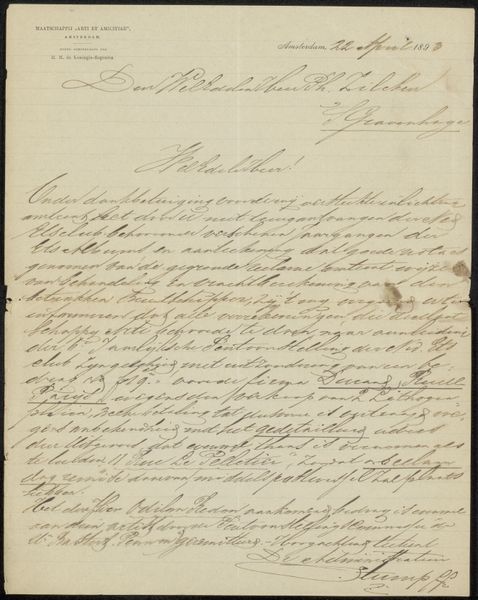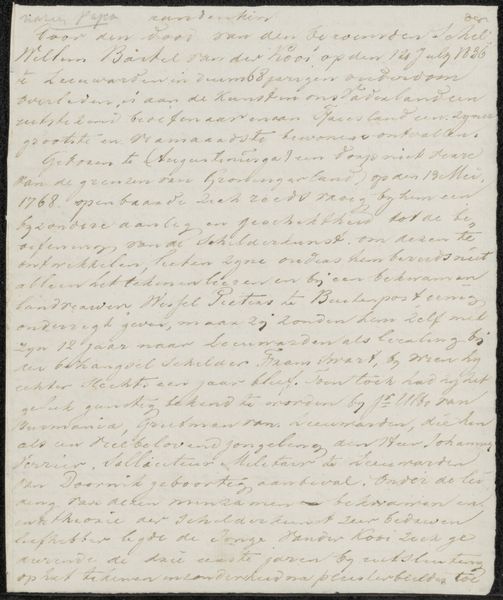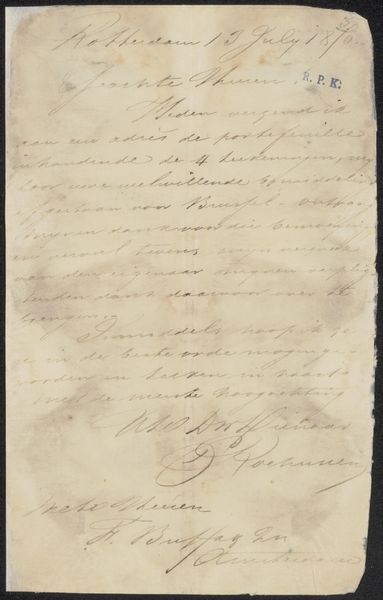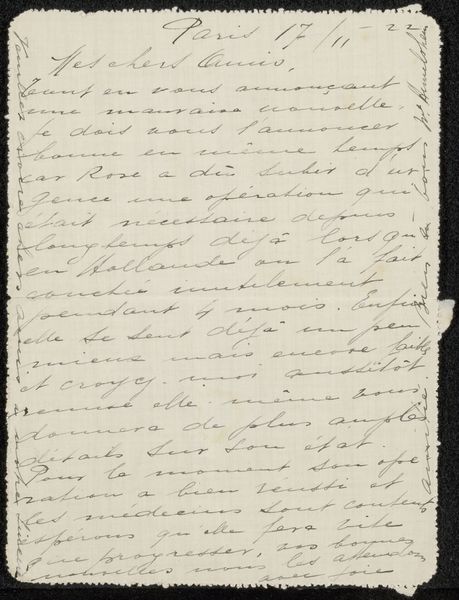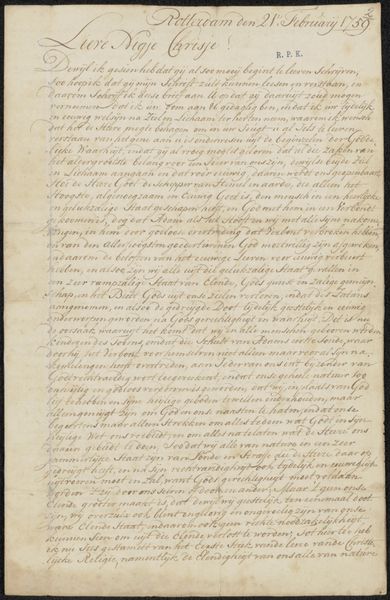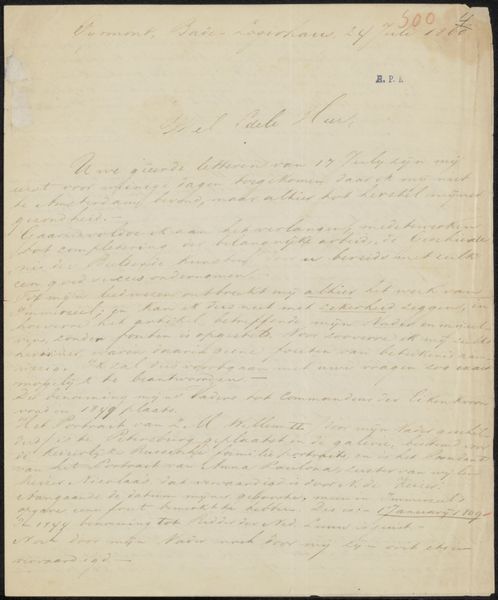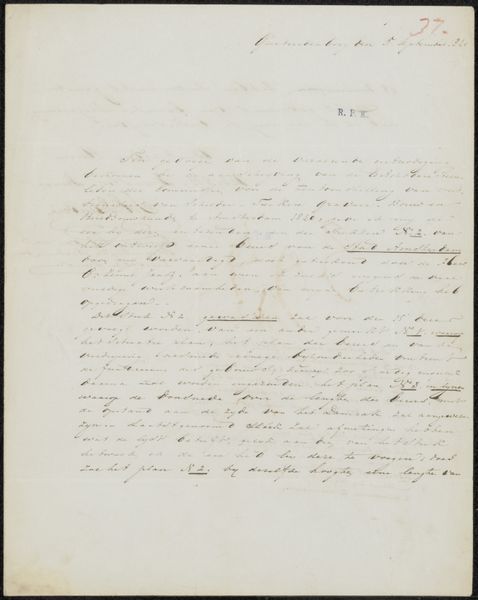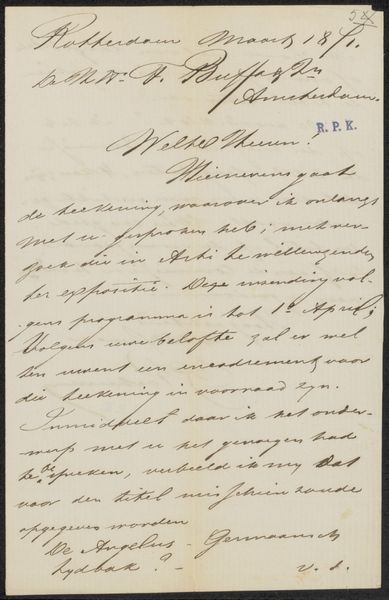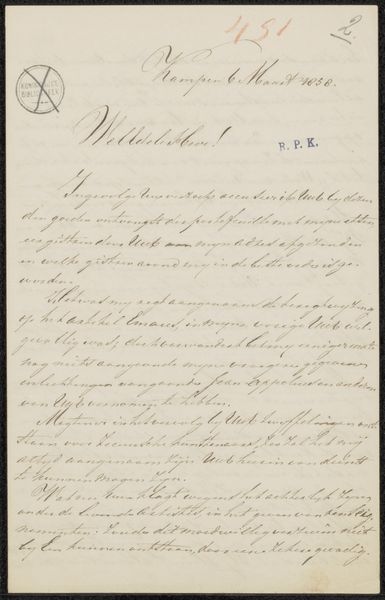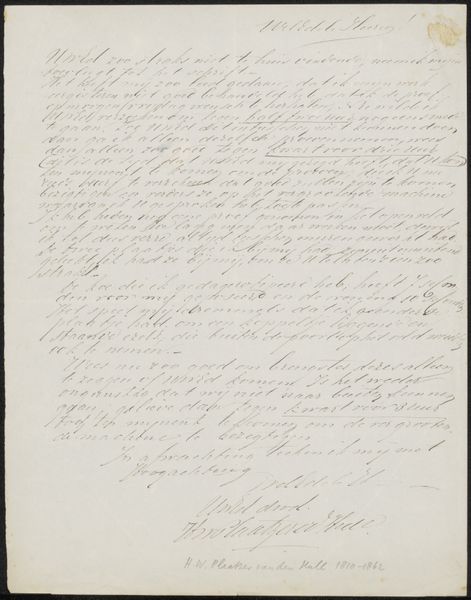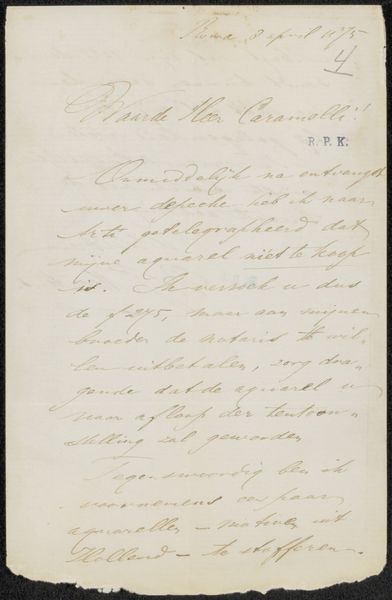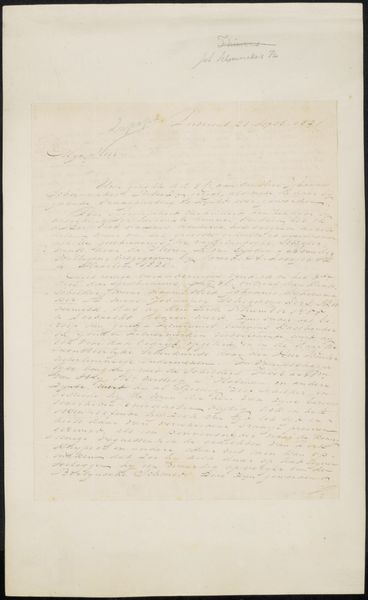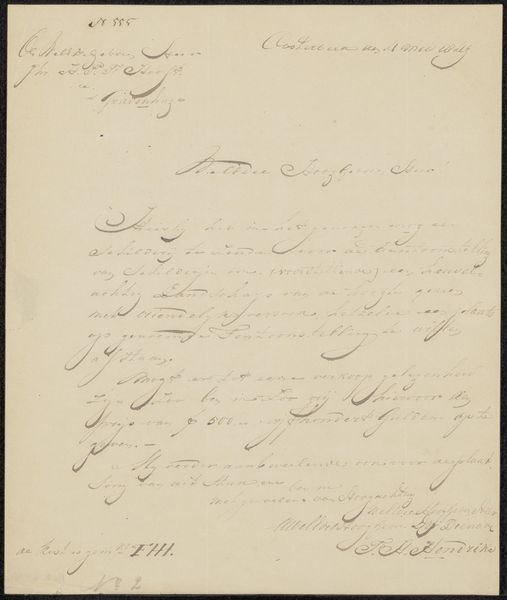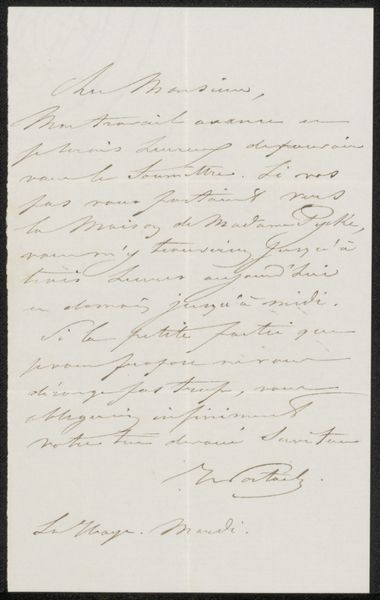
drawing, paper, ink
#
portrait
#
drawing
#
aged paper
#
toned paper
#
water colours
#
ink painting
#
paper
#
ink
#
watercolor
#
calligraphy
#
monochrome
Copyright: Rijks Museum: Open Domain
Curator: This is "Brief aan Alberto Caramelli" which translates to "Letter to Alberto Caramelli". It is believed to have been created sometime between 1874 and 1879, crafted by Johan Conrad Greive using ink and watercolor on paper. Editor: It has a ghostly feel, doesn't it? The monochrome and toned paper give it such an aged quality, like uncovering a relic from a bygone era. The texture feels tangible just by looking at it. Curator: Indeed. Greive's attention to the texture of the paper itself becomes part of the artistic expression. The formal style of the calligraphy also lends an important layer of understanding the institutional aspects of communication. Editor: The calligraphy really commands your attention. But beyond the formal style, I’m drawn to consider who Alberto Caramelli was, what their relationship might have been and what these words actually contain. I wonder what the context of that correspondence tells us. Curator: We see in art history, how this emphasis shifts over time. These glimpses are not simple narratives, they highlight a world, often one of private exchange and artistic networks that we often cannot get access to. Editor: True. But shouldn't we ask more about this? Considering the materials used—ink and watercolor—we also might speculate on the relationship between materiality and artistic practice, or social power even. It is not random; that he decided to use this medium. Curator: That's definitely something to consider. By using humble materials, does it suggest a sense of intimacy or perhaps financial constraint? What was Greive's broader artistic output? Did this fall in line with what else he did, was it experimental or normative. Editor: It opens so many avenues, and that's the strength. Thinking about how such objects played a part in identity and relationship for these two, is very striking and it helps question the contemporary methods of communications. Curator: Precisely. What seems mundane today, the writing and exchange of letters was key, it had its own protocol that might reveal underlying codes that are now forgotten. Editor: It all makes us realize that this small glimpse can contain endless readings if we simply take a moment to explore. Curator: A fitting end. Thanks.
Comments
No comments
Be the first to comment and join the conversation on the ultimate creative platform.
